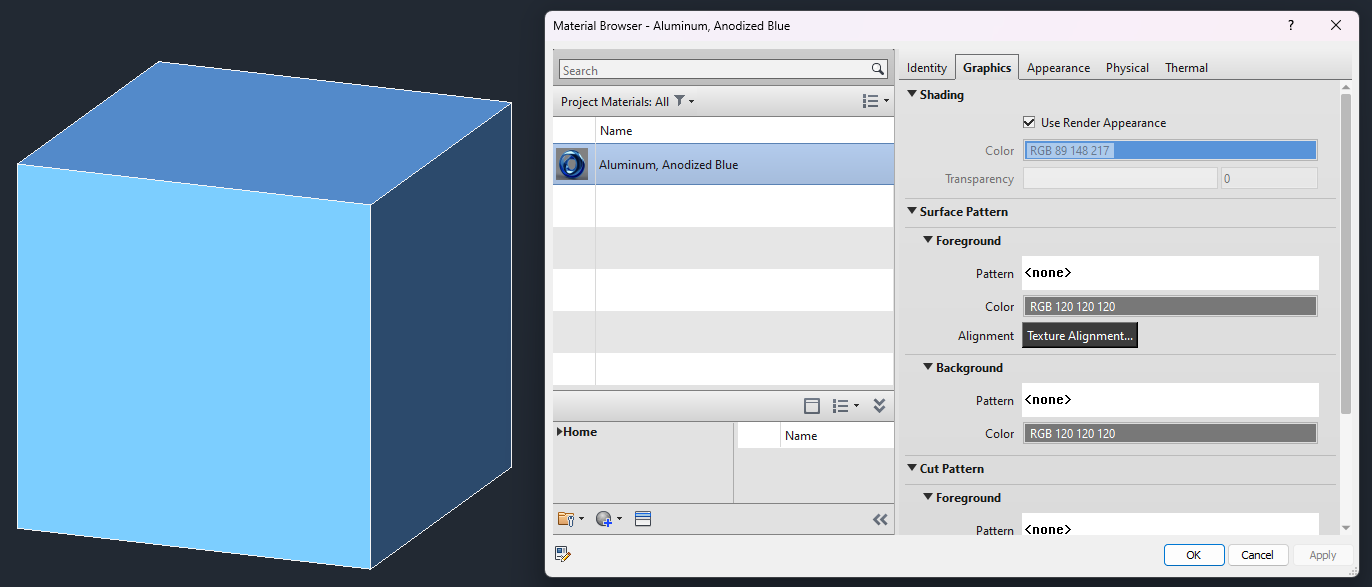-
Importing Materials in Revit
Importing materials in Revit can be challenging due to limitations in API access. Revit, like Autodesk Inventor, relies on a standard material library, but unlike Inventor, it does not provide direct programmatic access to the material browser. How It Works: Importing Materials in Revit To import a material into a Revit project, follow these steps:…

-
Selecting Start, Mid, and End Points on a Line in Inventor
When adding annotations to drawings in Autodesk Inventor, it’s often useful to select specific points along the edges of objects, such as the start, midpoint, or endpoint of a line, similar to how you would when adding dimensions. Inventor’s API provides access to this selection system through the PointInferenceEnabled property. By setting this property to…

-
Speed optimisations for searching iPart variants
Using iParts in Inventor makes it quick and easy to create hundreds of part variants. When working with Inventor’s API, it also simplifies locating the correct part since you only need to know the location of the factory file and search within for the variants, rather than finding the exact part file. However, searching for…
-
Creating geometry from scratch using Inventors API
-
Automating Dimension Placement in Inventor Drawings
When working with multiple variants of a part, creating drawings for each variation can be tedious and repetitive. By cleverly using Inventor’s attribute system in conjunction with custom code, it is possible to fully automate the creation of drawings. In the following example, we will focus on placing dimensions, as these are often the most…

-
Placing objects in Autodesk Inventor using the API
Automating the placement of objects in Autodesk Inventor assemblies can significantly enhance efficiency in design workflows. This guide delves into using the Inventor API to position and orient parts within an assembly, focusing on the manipulation of matrices for precise control. Establishing a Connection to Inventor Begin by obtaining a reference to the active Inventor…

-
Leveraging AI to Categorize Emails
Email categorization is an essential task for efficient email management, especially in professional settings. Automating this process using AI can significantly streamline workflow and enhance productivity. This guide explores how to use Azure, Microsoft Graph, and ChatGPT to intelligently categorize emails. Why use these services? ChatGPT: Advanced Natural Language Processing: ChatGPT 3.5 Turbo’s sophisticated language…
-
Creating a custom styled form for .NET
While the default .NET forms are functional, they often lack the contemporary aesthetics and dynamic features of modern applications. This tutorial will guide you through transforming a basic .NET form into a custom, interactive interface with a sleek, Windows 10-style glass look. Creating the Form Set Up the Basic Form To start, inherit a basic…
-
Automating Parametric Block Placement in AutoCAD
Introduction Parametric blocks in AutoCAD are powerful tools that enable users to insert blocks with varying dimensions and properties, maintaining consistency and efficiency in design. This guide will walk you through creating a parametric block, placing it via the API, and how this can be leveraged to automate the drawing process. Creating a Parametric Block…

-
Exporting Images of Autodesk Inventor Files
Introduction Exporting images of Autodesk Inventor files is a valuable process, especially when applying changes to multiple files. It allows for quick verification of outputs without the need to fully open each file, saving significant time and resources. This guide explores two methods for exporting images from Inventor files, their respective advantages and time efficiencies,…
-
Automating data entry into Autodesk Inventor with Excel
In the world of CAD and design, efficiency and accuracy are paramount. Automation in Autodesk Inventor using Excel data can significantly streamline workflows, particularly in repetitive tasks like data entry. This guide provides a detailed explanation of how to automate the process of inputting data into Inventor using a sample C# or VB code script.…
-
Replacing drawing title block
Replacing the drawing title block in Autodesk Inventor with a single click. Using Inventors API its possible to replace the block on an old drawing in a fraction of a second, simply by copying the block from the current template and pasting it onto the old drawing. Why replace the title block? When everything is…
-
Connecting Visual Studio to other applications
When collaborating with other applications and libraries, it’s essential to instruct your Integrated Development Environment (IDE), such as Visual Studio, where to locate the required files. This action enables the IDE to recognize available objects, providing programming support, and allows it to reference the files during code compilation. To include a reference in your project,…






